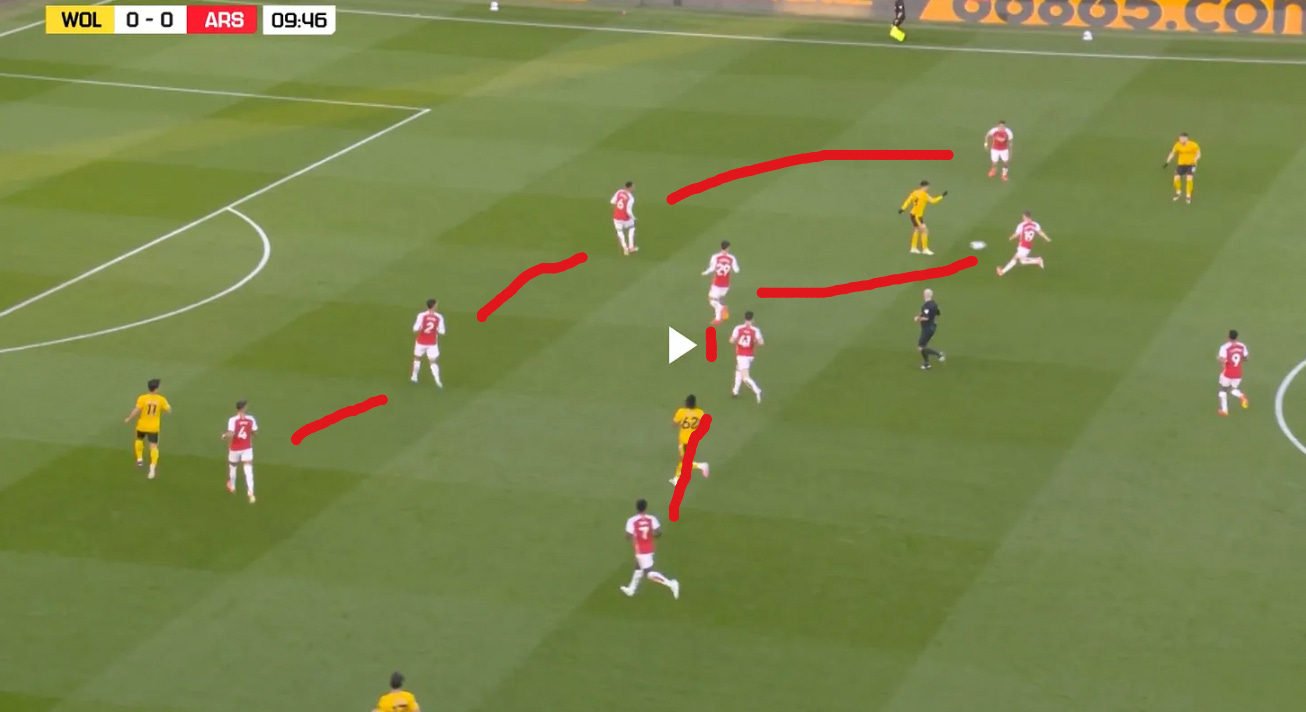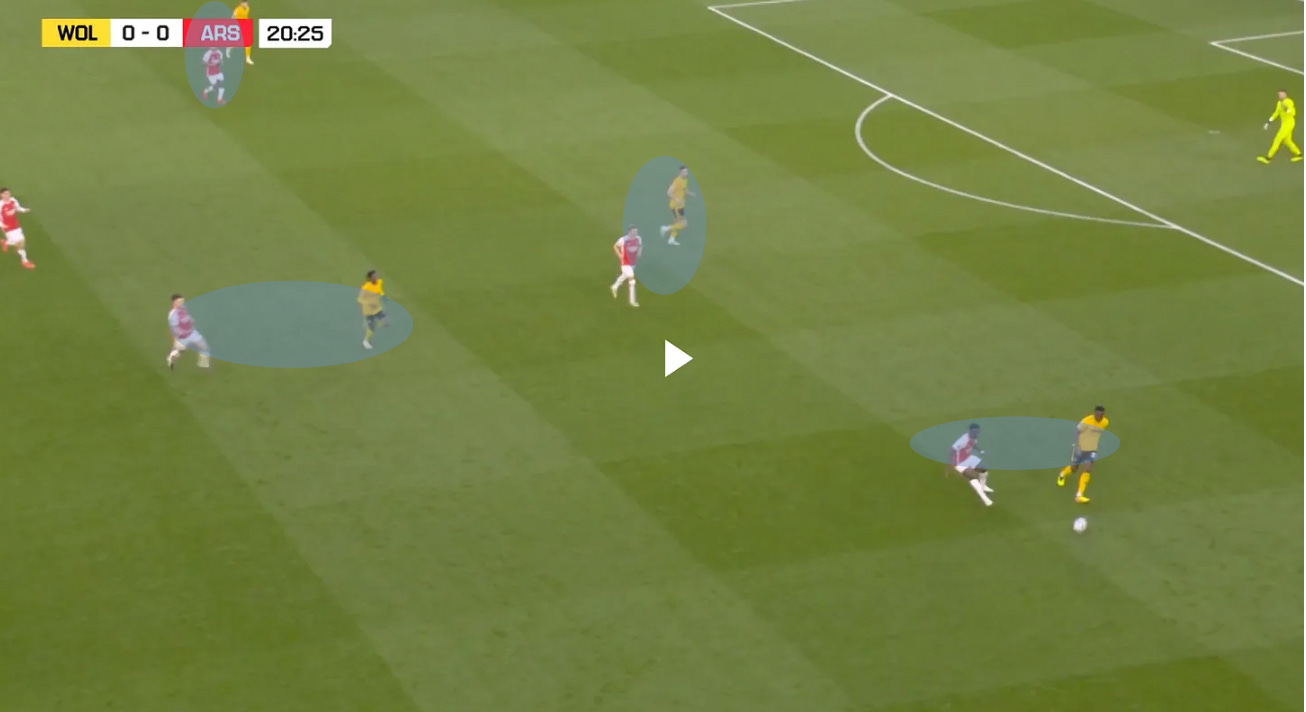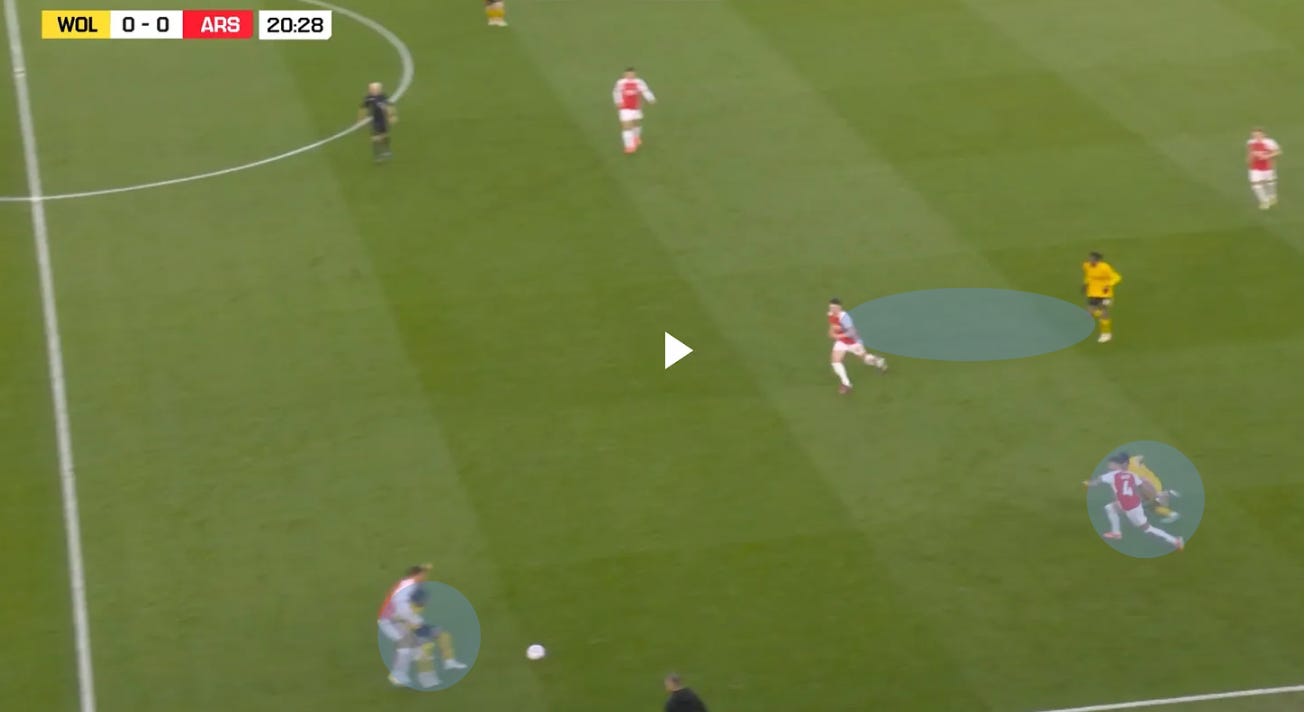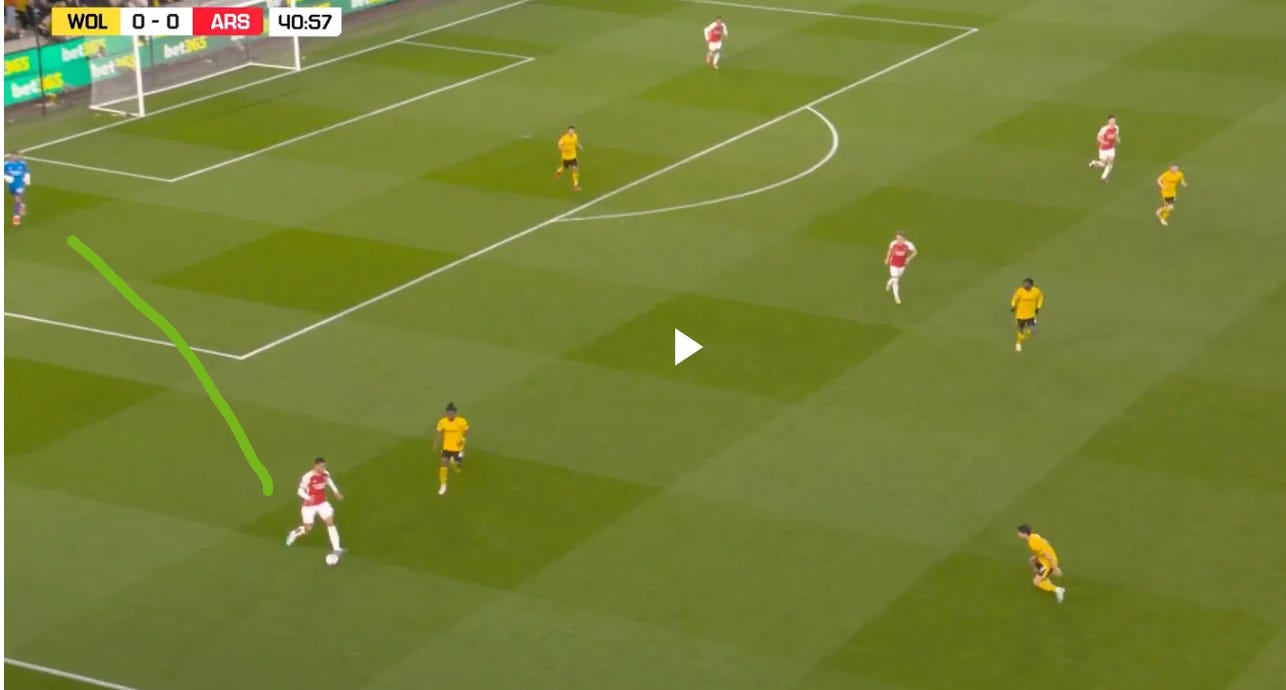#28 - Why Arsenal are so good at defending
Arsenal's defensive statistics are pretty nuts, and it's a team effort
In the 2023/24 Premier League season, Arsenal have associated themselves with robust defensive performances that have caught the eye of fans and analysts alike.
With one of the lowest xG (expected goals) conceded rates in world football, and now six away Premier League games on the bounce without conceding, the team's defensive strategy has become a cornerstone of their success.
With all the high tech solutions in modern football, at the heart of why Arsenal are so good defensively is their out of possession 442 shape and ‘defending from the front’.
This article delves into the tactical and statistical nuances that have contributed to Arsenal’s defensive prowess.
Section 1: Statistical Overview
Arsenal's defence has shown remarkable efficiency, conceding fewer goals than most of their closest rivals. Their xG conceded stands as by far the lowest in the league, a testament to the limited number of high-quality chances they allow. Data from recent matches illustrates how the Gunners have successfully contained threats from some of the most potent attacking sides in the league.
Over the course of the season so far, opponents average just 0.69 xG per 90 against the Gunners. The second lowest in the league is 0.95 (Manchester City) and third Liverpool with 1.19. There's then a big jump to a surprising 4th lowest Nottingham Forest (1.43).
Arsenal also concede the fewest shots on target in the league, again by a considerable margin (2.16 per 90). Liverpool are again third, on 3.56. The likes of Chelsea (4.9) and Manchester United (5.1) are some way off the pace, and that was evident in their recent matchup.
Section 2: Team Defensive Strategy
The foundation of Arsenal's defensive success lies in their cohesive team strategy. Unlike teams that rely heavily on individual brilliance, Arsenal’s approach is systematic and collective. From the forwards to the midfield, every player contributes to a defensive scheme that emphasises high or at times, mid-press and quick recovery.
Defending from the front and pressing throughout
This 'defending from the front' tactic not only disrupts opponents' build-up play but also minimises the pressure on the backline, allowing the defenders to handle fewer, less dangerous attacks.
Arsenal’s team approach to defending is highlighted in this 10-second spell early on in the Wolves game. In the first image, Wolves manage to escape out of two players pressing their midfield.
A dangerous situation then appears to be on, as Wolves switch to the ball to their right winger in lots of space, it could even lead to a 1v1.
Within 5 seconds, Arsenal have 8 outfield players behind the ball in their 442 shape and defuse the situation. Even Havertz, who is viewed as a more attacking midfield option, drops into the deepest midfield role.
442 out of possession
Arsenal have frequently dropped into a 442 shape out of possession. You can see this very clearly in the below, with Odegaard pressing as a second striker in this situation, at times Havertz takes this role, but both their tactical flexibility allows for this variety.
This shape allows for Arsenal to press man-for-man. 10 minutes later, we see a great example of pressing from all the team. In the series of images below, you see Arsenal press high and force Wolves to play the ball backwards, eventually leading to their goalkeeper having no option but to go long and subsequently surrender possession.
(above), central defender William Saliba is pressing high and wide to apply pressure to the Wolves player and force him to pass backwards.
Immediately Odegaard is back as the second pressing striker in Arsenal’s 442 off-the-ball formation.
A similar shape, with different personnel, produces a similar outcome vs. Brighton in the recent game. Here, Havertz has started as striker and Jesus on the left, with Jorginho alongside Rice. Again Odegaard is the midfielder to act as the ‘2’ in the 442 shape and the team tend to have more success when it is him in that role.
Ball retention
Another aspect to reducing the opponents threat is how Arsenal retain possession. New signing David Raya has helped Arsenal do that. His angles and ability with his feet have effectively allowed him to be an extra defender in the build up at times. This also allows Arsenal’s defenders to use him as a pressure-releasing valve by giving him the ball in difficult situations.
Raya plays the ball into space ahead of Saliba here. Immediately though he runs to a position out of the channel of the Wolves striker, giving Saliba a safe route to retain the ball if he needs to turn around.
Section 3: Key Defensive Players and Partnerships
Central to Arsenal's defence are key players whose performances have been crucial. The central defensive partnership has a blend of intelligence and physicality. Ben White has also played a significant role, able to play as a central defender in certain build-up shapes, and an athletic attacking full-back in others. Each player's ability to win individual duels and maintain tactical discipline contributes significantly to the team's overall defensive solidity.
But the stats further back up this defending from the front mantra. Rice of course leads the way with 2.1 tackles per game but Saka (1.8) and Odegaard (1.3) are third and fourth.
Arsenal’s defensive success in the 2023/24 season is no accident. It is the result of strategic planning, excellent player performance, phenomenal stamina, tactical awareness, organisation and flexibility. With such a strong defensive foundation, Arsenal are well-positioned to contend for the highest honours, now and in the future.
The desire instilled into these players to love defending is admirable and a real testament to Mikel Arteta and his coaching staff. Go back 5 years or so, and you’ll remember many players shirking such responsibility.
If you’ve made it this far, thanks for reading. Please subscribe for free if you haven’t already and share this article. Head over to my YouTube for more.
















